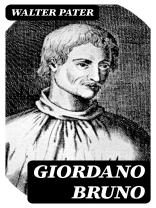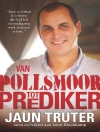In ‘Giordano Bruno, ‘ Walter Pater delves into the life and philosophical contributions of the enigmatic Renaissance thinker and martyr, Giordano Bruno. Through a meticulous blend of literary critique and biographical narrative, Pater employs an impressionistic style to explore themes of infinite universe, the nature of existence, and the power of individual thought. The book is situated within the context of the 19th-century aesthetic movement, where Pater’s emphasis on sensory experience and intellectual exploration challenges convention, echoing Bruno’s own defiance against dogma and authority. Walter Pater, a prominent figure of the aesthetic movement, was deeply influenced by his background in classics and philosophy, which informed his appreciation for Renaissance humanism. His scholarly pursuits led him to Bruno—a figure emblematic of intellectual liberation and the pursuit of truth in an era of intense theological conflict. Pater’s engagement with Bruno’s radical ideas reflects his own quest for artistic and personal freedom, making the book both a homage and a critical exploration. This compelling work is recommended for readers interested in philosophical thought, Renaissance history, and the interplay between art and intellect. Pater not only illuminates Bruno’s profound ideas but also invites readers to reflect on the broader implications of free thought and creativity in their own lives.
About the author
Walter Horatio Pater (1839–1894) was an English essayist, literary and art critic, and fiction writer, renowned for his eloquent prose style and the promotion of a philosophy known as aestheticism. A scholar of Oxford University, Pater’s work laid the groundwork for the aesthetic movement, which advocated art for art’s sake, influencing Oscar Wilde and other late Victorian writers. Pater’s ‘Studies in the History of the Renaissance’ (1873), retitled ‘The Renaissance: Studies in Art and Poetry’ in its third edition, remains his most celebrated work, introducing his famous maxim, ‘to burn always with this hard, gem-like flame, to maintain this ecstasy.’ His writing on Giordano Bruno was part of his collection ‘Miscellaneous Studies: A Series of Essays’ (1895), published posthumously. This work continues Pater’s exploration of the Renaissance, focusing on the life and philosophy of the Italian polymath Giordano Bruno. Through his lens, Pater examines the interplay between aesthetic experience and philosophical thought. His essays are characterized by intricate prose that seeks to capture the subtleties of art and the deep resonance of historical figures’ lives. Considered a seminal figure in the discussion of aesthetics, Pater’s influence extends beyond the Victorian era, echoing through modernist literature and into contemporary critiques of art and culture.












